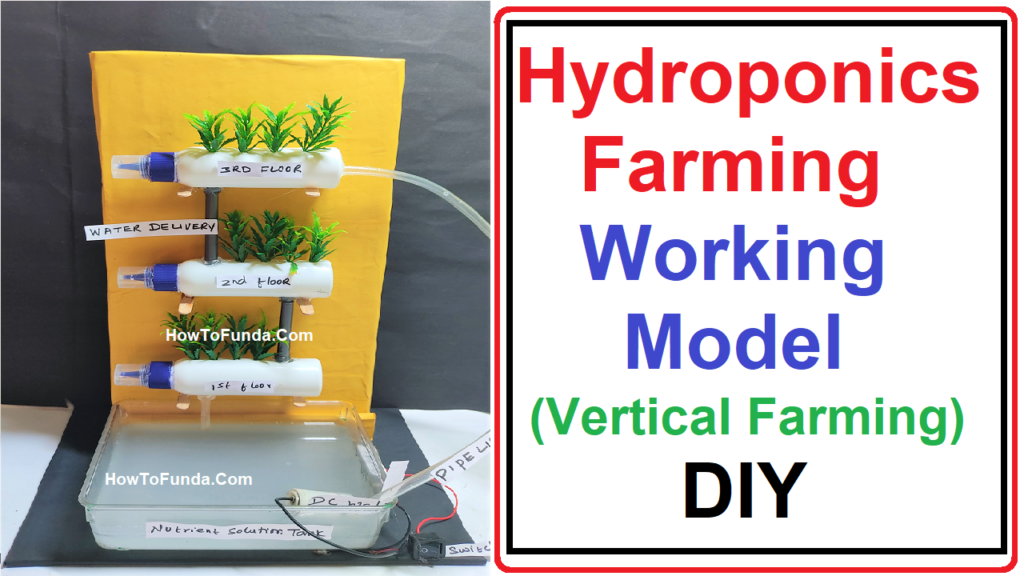1. What is hydroponics farming?
- Answer: Hydroponics farming is a method of growing plants without soil. Instead, plants receive nutrients through a nutrient-rich water solution.

2. How do plants obtain nutrients in hydroponics farming?
- Answer: Nutrients in hydroponics farming are dissolved in water, and plants absorb them directly through their roots.
3. What are the advantages of hydroponics farming over traditional soil-based farming?
- Answer: Advantages include faster plant growth, higher yields, efficient nutrient use, reduced water consumption, and the ability to grow in non-arable areas.
4. What types of systems are used in hydroponics farming?
- Answer: Common systems include nutrient film technique (NFT), deep water culture (DWC), aeroponics, and drip systems.
5. How does the nutrient film technique (NFT) work in hydroponics?
- Answer: NFT involves a thin film of nutrient-rich water flowing over the plant roots, providing essential nutrients. Excess water is then collected and recirculated.
6. What is the role of a nutrient solution in hydroponics farming?
- Answer: The nutrient solution in hydroponics farming contains essential minerals and nutrients needed for plant growth, including nitrogen, phosphorus, potassium, and trace elements.
7. Can hydroponics be used for growing all types of plants?
- Answer: Yes, hydroponics can be used to grow a wide variety of plants, including vegetables, fruits, herbs, and flowers.
8. How does pH control play a role in hydroponics farming?
- Answer: pH control is crucial to ensure that the nutrient solution remains within the optimal range for nutrient absorption by plants. Most plants prefer a pH range of 5.5 to 6.5.
9. What are some challenges faced in hydroponics farming?
- Answer: Challenges include the initial setup cost, the need for technical knowledge, and the importance of maintaining precise environmental conditions.
10. How does aeroponics differ from other hydroponic systems?
Answer: In aeroponics, plants are suspended in air, and nutrient-rich mist is sprayed directly onto the roots. This method promotes efficient nutrient absorption and oxygenation.
11. How does hydroponics farming contribute to water conservation?
Answer: Hydroponics farming is more water-efficient than traditional soil-based farming, as it allows for precise control over water usage and minimizes wastage.
12. Can hydroponics farming be practiced in urban areas?
Answer: Yes, hydroponics farming is well-suited for urban areas, as it can be implemented in limited space, such as rooftops or indoor environments.
13. What are the key components of a hydroponics system?
Answer: Key components include a nutrient reservoir, a delivery system (pumps or pipes), a growing medium, and a method for providing adequate light to plants.
14. How does hydroponics farming reduce the risk of soil-borne diseases?
Answer: Since hydroponics farming doesn’t use soil, the risk of soil-borne diseases is minimized, providing a cleaner and more disease-resistant environment for plants.
15. How can students set up a small-scale hydroponics system for educational purposes?
Answer: Students can use simple materials like containers, nutrient solutions, and growing mediums to set up a small-scale hydroponics system for hands-on learning.
16. What role do growing mediums play in hydroponics farming?
Answer: Growing mediums support plant roots and provide stability. Common mediums include coconut coir, perlite, vermiculite, and rock wool.
17. How does hydroponics farming contribute to sustainable agriculture?
Answer: Hydroponics promotes sustainable agriculture by using fewer resources, reducing environmental impact, and allowing for year-round crop production.
18. Can hydroponics farming be combined with other sustainable practices, such as renewable energy use? –
Answer: Yes, hydroponics farming can be integrated with renewable energy sources, such as solar power, to further enhance its sustainability.
19. How does hydroponics farming address nutrient deficiencies in plants? – Answer: Hydroponics allows precise control over nutrient levels, making it easier to address and correct nutrient deficiencies in plants by adjusting the nutrient solution.
20. What is the significance of electrical conductivity (EC) in hydroponics farming? – Answer: Electrical conductivity measures the concentration of dissolved salts in the nutrient solution. Monitoring EC helps ensure that nutrient levels are within the desired range.
21. How does hydroponics farming contribute to controlled environmental agriculture (CEA)? –
Answer: Hydroponics is a key component of controlled environmental agriculture, allowing for precise control of factors like temperature, humidity, and light to optimize plant growth.
22. How can hydroponics farming be adapted for use in areas with limited access to water? –
Answer: Hydroponics systems can be designed to recirculate and reuse water, minimizing water consumption. Additionally, efficient irrigation techniques can further conserve water.
23. How can hydroponics farming be incorporated into school curriculums?
Answer: Hydroponics can be integrated into biology or environmental science curriculums through hands-on projects, experiments, and discussions about sustainable agriculture.
24. What are some potential future advancements in hydroponics technology?
Answer: Future advancements may include the development of smart hydroponics systems with automation, improved nutrient delivery systems, and enhanced energy efficiency.
25. How does hydroponics farming align with the concept of “precision agriculture”?
Answer: Hydroponics embodies precision agriculture by allowing precise control over growing conditions, nutrient levels, and environmental factors, leading to optimized crop production.

